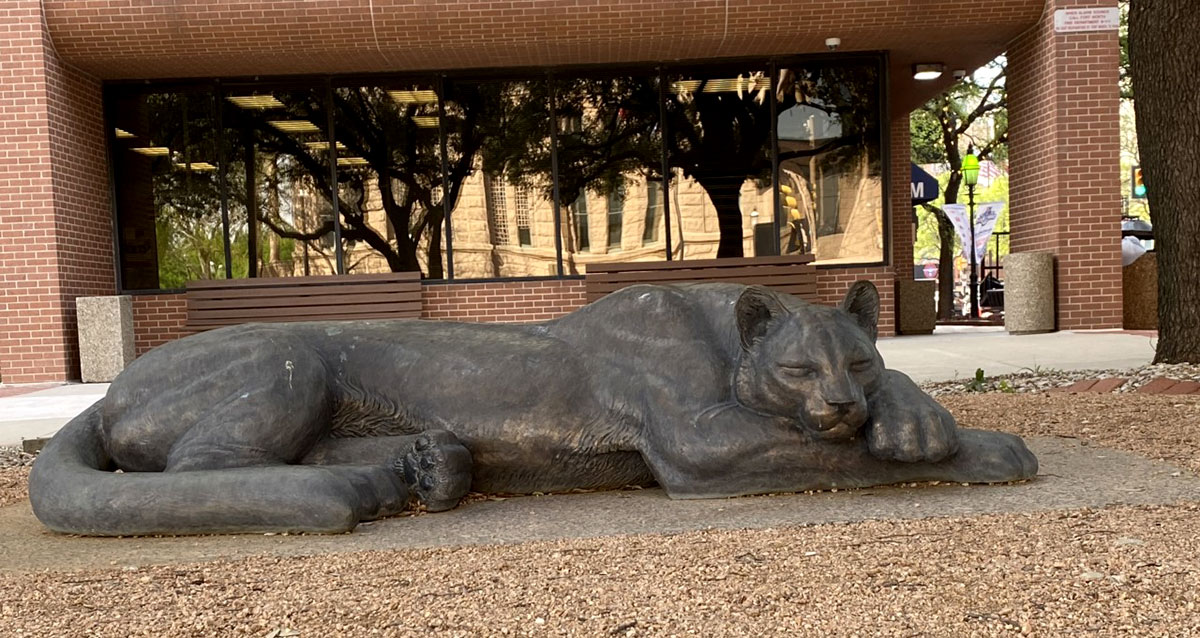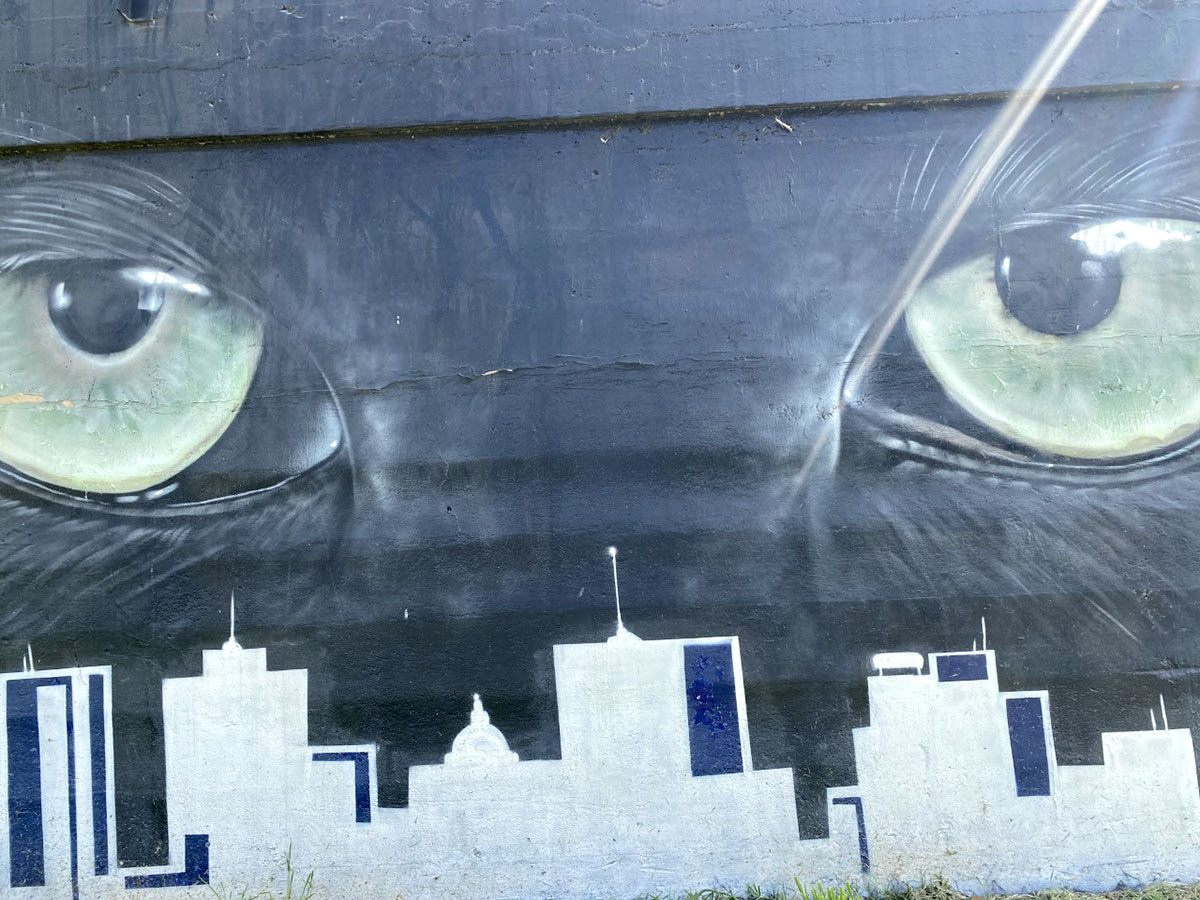
The city of Fort Worth is known for many nicknames, such as “Cowtown,” “Where the West Begins,” “Funkytown” and “Th Modern West.” These nicknames all have their own origins, and Cowart’s experience led to the city being known as “Panther City.
FORT WORTH - One hundred and fifty years ago, a practicing lawyer wrapped up a meeting in Fort Worth and walked out to find a panther asleep on the abnormally quiet Main Street. This man was Robert E. Cowart.
The city of Fort Worth is known for many nicknames, such as “Cowtown,” “Where the West Begins,” “Funkytown” and “The Modern West.” These nicknames all have their own origins, and Cowart’s experience led to the city being known as “Panther City.”
In 1873, Fort Worth faced economic difficulty which lasted for a few years. According to sleepingpanther.com, as Dallas and Fort Worth were preparing their railroads, the major railroad banks, and other major companies went bankrupt. As business was down and the normal bustle of street life eased, a panther found its way to the city. Cowart wrote about his findings in the Dallas Daily Herald, the local paper at the time.
The article mocked the occurrence, citing the panther as a symbol of weakness and the city’s economic downfall. However, B.B. Paddock, the editor of The Fort Worth Democrat, decided to challenge the statement and created a visual depiction of a panther lying down with the phrase, “Where the panther laid down.”
This led to the city leaders, and citizens themselves, to see the panther as a symbol of strength. The citizens were motivated to complete the unfinished train tracks which helped to fix the economy. Later on, a statue was created called “The Sleeping Panther” which stands on Main Street today.
The panther serves as a mascot for several places such as The Fort Worth Cats baseball team and Paschal High School. According to the plaque on the “The Sleeping Panther” statue, at one point live panthers were the mascots of the city’s fire department.
Now, there are murals depicting the cats and locations are named for the panther, such as Panther Island Pavilion.
According to the Panther Island Pavilion website, the venue on the Trinity River hosts concerts, festivals, runs, and bike rides. They also offer access to the river for fishing, tubing, and other activities.
Hiking trails and nature surround the pavilion houses a mural depicting the panther, its eyes staring across the city skyline.
While the chances of a civilian finding a panther asleep on the pavement are low, the city still holds the wild cat fondly as a symbol of hope even in their darkest hour, and the panther continues to hold a strong sense of resilience for the future.
Panther Island Pavilion is located at 395 Purcey St. 76102. For more information, visit pantherislandpavilion.com.
This piece was written during the live contest for the Texas Intercollegiate Press Association. It has been edited for publication. My column over my experiences can be read here.

